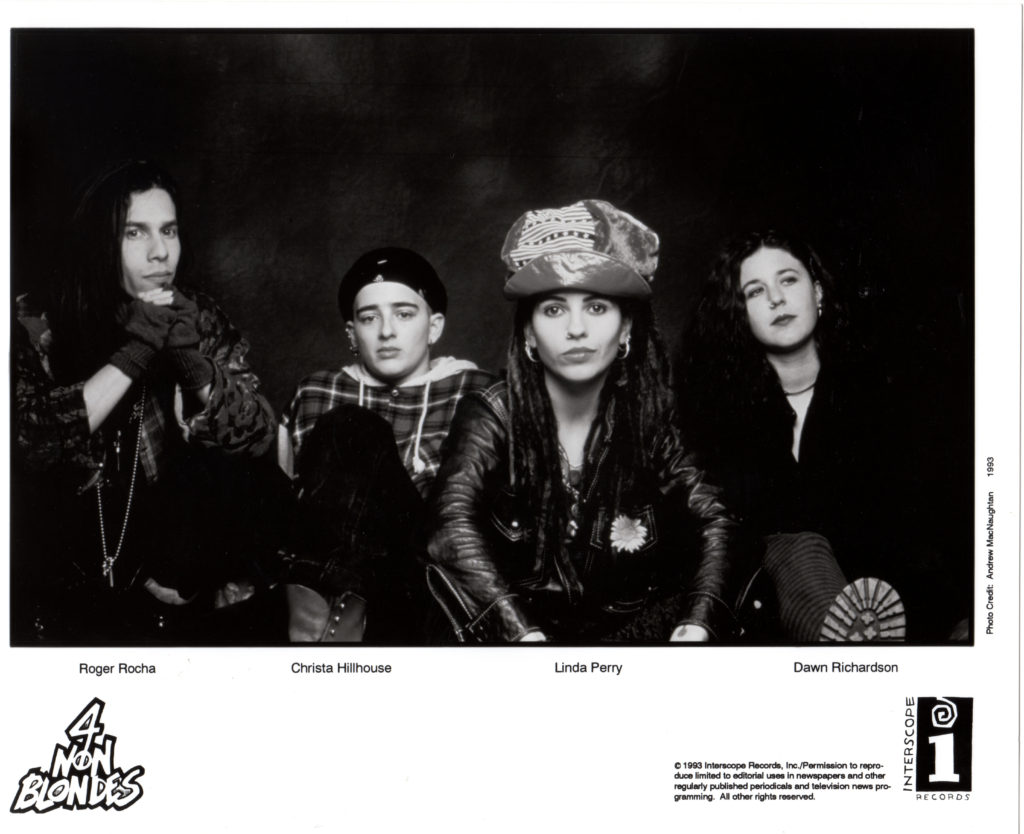
San Francisco’s music scene has created a lot of popular music over the years, and the period of the late 80’s and early 90’s proved fruitful for the city’s musical legacy. 4 Non Blondes was a band born from the angst of living in San Francisco through the decade of AIDS, gay activism and lesbian sexual revolution.
Within the queer community of San Francisco – notably in a Haight Street club called Female Trouble – a new scene heavily populated with women musicians started brewing, and it’s participants had decidedly embraced radical and self-affirming attitudes over any desire for inclusion within and/or tolerance by the straight (music) world.
The 4 Non Blondes’ musical strength and honesty broke through and crossed over into the mainstream music world. The band forged a musical bridge from an urban dyke underground to music lovers of all genders, races and sexual orientations.
4 Non Blondes began playing together in the fall of 1989 and broke up in early 1995. The success of the song “What’s Up?” was, at times, mind boggling. I suppose we always thought that the song could be a “hit” – but the extent of it’s eventual popularity went above and beyond any dream I had supposed. The single reached number #1 on music charts all over Europe, and the album Bigger Better Faster More! has sold well over 6 million copies worldwide. Twenty plus years after the band’s breakup I still receive letters from fans and meet people from all walks of life who have a story, a memory, to share with me about how this particular song touched their lives.
And I often am confronted with the question “why did you guys break up?” I tend to laugh it off and say “wait for the book to come out” because there isn’t a simple answer to satisfy this simple question. “Bands are like marriages”, I find myself explaining: “You have similar goals when you first fall in love and as time passes those goals and individual visions of the future change. You evolve in different directions. You grow apart.”
There were great times, feeling on top of the world times. I think about the highs – touring with Neil Young, Aerosmith, climbing the charts, earning gold records, platinum records, and plenty of money. I think about the lows – Wanda being fired because of drug abuse, and my best friend forced out of the band during the recording of our debut album. Fighting and confusion; it was far from the perfect vision of success.
There are similarities to tried and true rock and roll bands’ history of the ages, i.e., the sex, the drugs, and the rock and roll. But we were also unique in our blatant queerness. Being gay was not the most important trait we embodied, but it did contribute – importantly, in my opinion – to what our music brought to the masses.
We were nothing if not sincere.
-Christa Hillhouse, 2011
